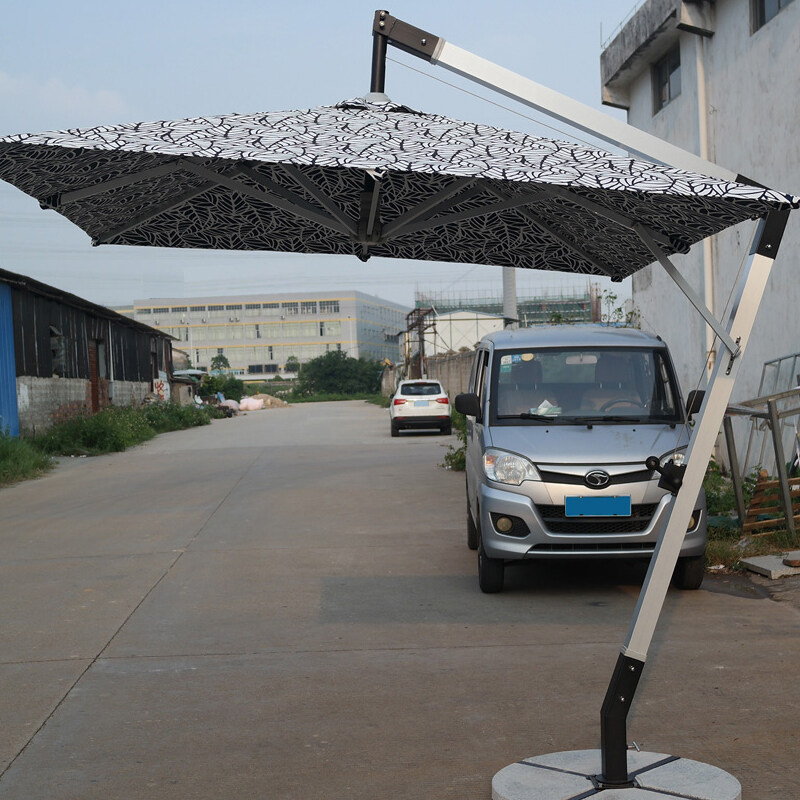Email format error
Email cannot be empty
Email already exists
6-20 characters(letters plus numbers only)
The password is inconsistent
Email format error
Email cannot be empty
Email does not exist
6-20 characters(letters plus numbers only)
The password is inconsistent


In the dynamic realms of architecture and landscape design, the garden umbrella square has emerged as a captivating element that transcends mere aesthetic appeal. This unique design component not only infuses large-scale architectural or landscape projects with vitality but also catalyzes community interactions and fosters shared outdoor spaces.
1.1 Design Value of Garden Umbrella Squares
The garden umbrella square serves as a harmonious blend of functionality and artistic flair. Beyond its visual allure, it provides essential shade, protection from elements, and delineates spaces within larger areas. Historically, umbrellas, in various forms, have adorned landscapes and architectural spaces across civilizations, reflecting cultural nuances and socio-economic developments. For example, in certain Mediterranean cultures, shaded squares or courtyards were integral to community gatherings, echoing the modern-day relevance of garden umbrella squares.
1.2 Challenges and Opportunities in Integrating Existing Structures
When envisioning the integration of garden umbrella squares into existing architectural landscapes, professionals confront multifaceted challenges and opportunities. Structural integrity, aesthetic coherence, and sustainability emerge as primary considerations. Architects must navigate intricate design nuances, ensuring that the umbrella squares harmoniously meld with existing structures while retaining their functional essence. Moreover, the eco-conscious era mandates the utilization of sustainable materials and practices, emphasizing durability, recyclability, and minimal environmental footprint.
1.3 Key Considerations
The integration process necessitates meticulous attention to user-centric design principles. By assimilating insights from anthropological studies, designers can decipher user behaviors, preferences, and cultural affinities. Psychological aspects, such as comfort, spatial perception, and emotional resonance, further shape design decisions. Concurrently, sociological perspectives underscore the garden umbrella square's role as a communal nexus, facilitating social interactions, cultural exchanges, and community cohesion.

2.1 Community Building with Garden Umbrella Squares
Garden umbrella squares transcend their functional attributes, evolving into vibrant community hubs. These spaces encapsulate cultural vibrancy, hosting diverse events ranging from art exhibitions, musical performances, culinary festivals, and educational workshops. Such activities catalyze social integration, knowledge dissemination, and community empowerment. The squares thus metamorphose into dynamic arenas where residents converge, celebrate, collaborate, and forge enduring bonds.
2.2 Utilization of Shared Outdoor Spaces
Public spaces, including parks, schools, and recreational areas, witness transformative impacts with the incorporation of garden umbrella squares. These squares amplify the spaces' utility, offering sanctuaries for relaxation, leisure activities, and contemplative moments. Beyond individual experiences, they cultivate collective memories, narratives, and shared identities. Consequently, they bolster community pride, foster inclusivity, and fortify community resilience against urbanization's rapid pace.
2.3 Promotional Initiatives and Advocacy
Globally, the renaissance of garden umbrella squares in urban planning and community development underscores their pivotal role in reimagining urban landscapes. Collaborative endeavors, encompassing public-private partnerships, grassroots movements, and civic initiatives, advocate for their proliferation. Visionary projects, such as eco-friendly urban revitalizations, smart city initiatives, and cultural heritage preservation efforts, integrate garden umbrella squares as catalysts for sustainable development, social equity, and cultural rejuvenation.
The garden umbrella square's integration and application in architecture and community design encapsulate its multifaceted contributions to modern urban landscapes. By synthesizing insights from history, ecology, sociology, psychology, and urban planning, stakeholders can harness its transformative potential. As cities evolve, confronting myriad challenges from climate change to social disparities, garden umbrella squares emerge as resilient, adaptive, and inclusive solutions. They resonate with timeless principles of communal living, ecological stewardship, and aesthetic innovation. Thus, they epitomize a harmonious confluence of tradition and modernity, individuality, and community, fostering vibrant, sustainable, and cohesive urban environments.